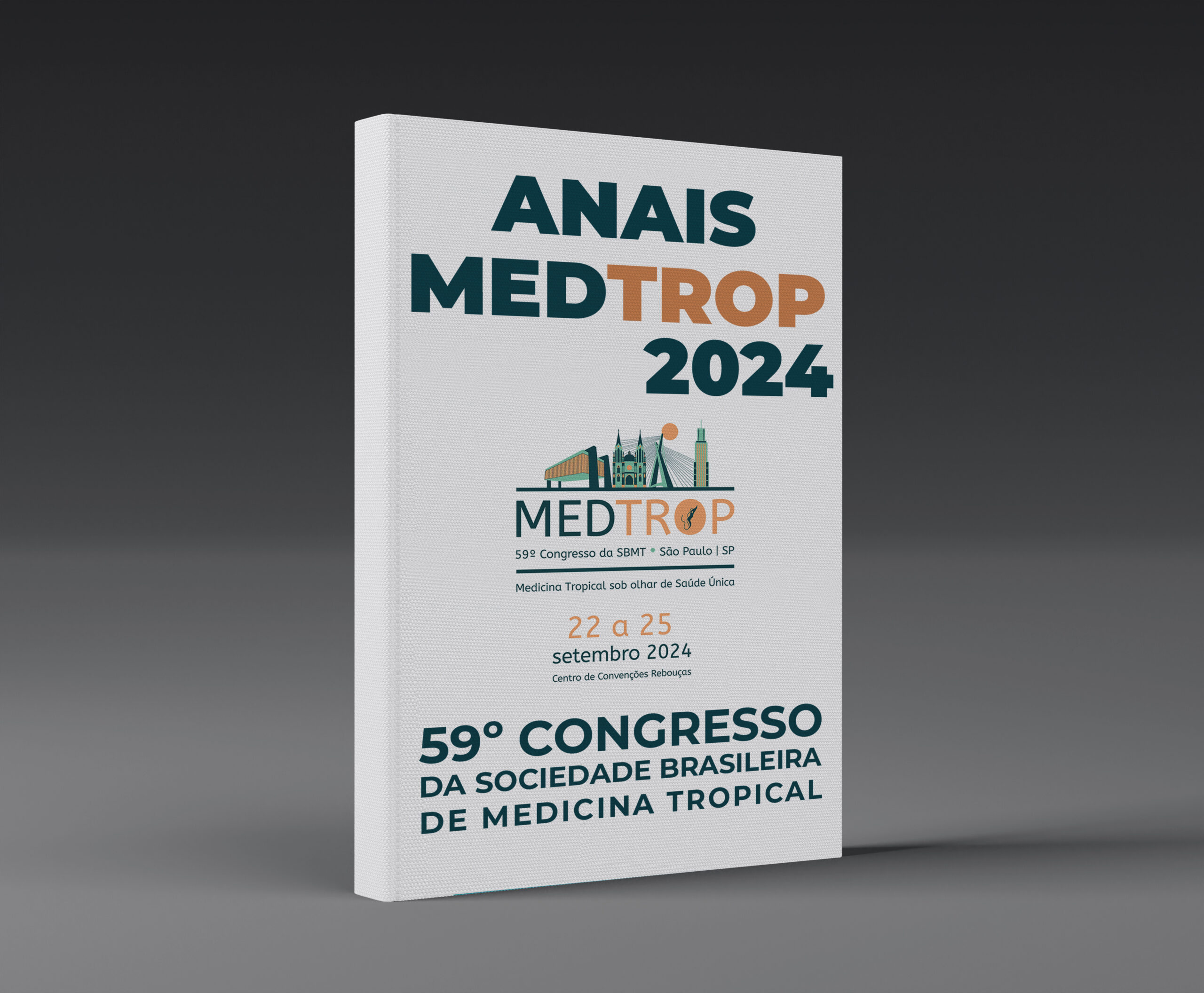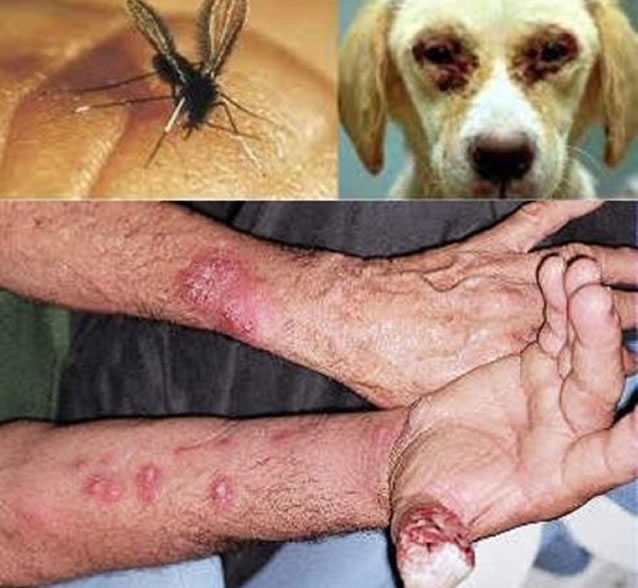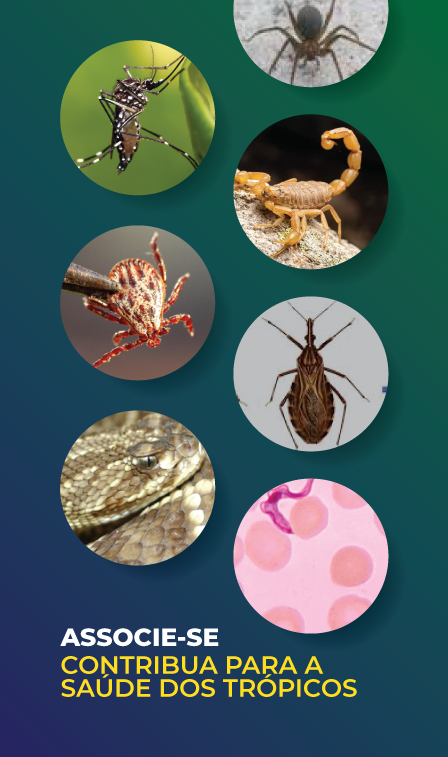
Vitória no STF garante tratamento de cães com leishmanioseVictory in the Federal Supreme Court grants treatment for dogs i
09/12/2013
Não existe qualquer comprovação científica que sinalize que a matança é um método eficaz para combater a leishmaniose
“Os veterinários estão aparelhados a ministrar tratamento nos cães infectados”, assinala Dr. Wagner Leão do Carmo, advogado responsável pela ação movida pela Sociedade de Proteção de Bem Estar Animal – Abrigo dos Bichos, de Campo Grande/MS, em favor da não matança de animais com leishmaniose. Ele atenta que cerca de seis milhões de cães são sacrificados, anualmente, no Brasil. A autorização formal permitindo o tratamento de cães com leishmaniose foi concedida pelo presidente do Supremo Tribunal Federal (STF), ministro Joaquim Barbosa. A posição do STF vai de encontro a Portaria Interministerial MS/MAPA nº 1426/2008, que entre outras coisas proíbe, em todo o território nacional, o tratamento da leishmaniose visceral em cães infectados ou doentes, com produtos de uso humano ou produtos não registrados no Ministério da Agricultura, Pecuária e Abastecimento (Mapa).
Veterinários e demais defensores dos animais aplaudem a decisão do STF. “O tratamento de cães com leishmaniose acaba com o argumento que esta zoonose é uma ameaça à saúde pública, além de reconhecer que a eutanásia é um método cruel e proibido pela nossa legislação vigente”, ressalta Maria Lúcia Metello, presidente fundadora do Abrigo dos Bichos.
Dr. Wagner explica que a União ingressou com três recursos, sendo: Embargos Infringentes e dois Pedidos de Suspensão de Liminar, um para o Superior Tribunal de Justiça (indeferido), e outro para o Supremo, igualmente indeferido, o qual, nos fundamentos de seu indeferimento reforça a tese de que o sacrifício dos cães constitui uma pratica cruel, que a política pública deve ser revista com o apoio de cientistas e de médicos veterinários. Ele frisa que a Portaria 1426/2008 foi considerada uma afronta ao comando Constitucional (art. 225 da CF).
Entretanto, para o Ministério da Saúde (MS) e para a pesquisadora e coordenadora do Grupo de Estudos em Leishmanioses da Superintendência de Controle de Endemias da Secretaria de Saúde do Estado de São Paulo, Dra. Vera Camargo-Neves, o tratamento canino não é a solução e nem a preocupação maior, já que para ambos, no entendimento de saúde pública, é preciso levar em consideração a proteção da população sadia, isto é, não infectada. “Na minha experiência, os meus estudos mostram que o aumento da prevalência canina é fator de risco para a ocorrência de casos humanos. Quanto maior o número de parasitos circulantes, maior o número de fêmeas do vetor que se infectam, e assim aumenta a chance de infecção de seres humanos”, salienta. Segundo Dra. Vera, a parcela mais afetada são crianças com menos de 10 anos e adultos com mais de 50 anos, faixa etária que devido às comorbidades associadas observa-se maior letalidade.
Já Sibele Cação, veterinária e ex-presidente do Conselho Regional de Medicina Veterinária de Mato Grosso do Sul (CRMV/MS), avalia que a relutância em aceitar o tratamento ocorre por ignorância. Ela argumenta que para se defender algo é preciso ter conhecimento profundo, e a maioria das pessoas, inclusive os que estão em cargos públicos e também alguns veterinários que condenam o tratamento, sabem pouco ou quase nada sobre o tratamento nos cães, sob o ponto de vista clínico veterinário.
“Fica mais fácil e cômodo defender a ideia de que não tratar e matar os cães é a melhor saída para resolver o problema. Mas isso é um equívoco”, afirma Sibele ao ponderar que enquanto o poder público não criar um programa de controle da leishmaniose baseado em educação em saúde, controle populacional dos cães, por meio de projetos de esterilização em massa e controle ambiental do vetor, nada vai mudar. Ela enfatiza que essas ações precisam ser adotadas urgentemente para evitar que a doença continue se alastrando e matando mais pessoas.
Uma longa batalha
Dr. Wagner considera que venceu a luta, mas não a guerra. “Creio que deva haver recursos, até porque, eles nunca ficaram impassíveis a outras decisões, chegando ao ponto de formular peças com mais de trezentas folhas para demonstrar a supremacia dos interesses que defendem”, lembra. Para ele, a relutância se deve a alguns fatores, principalmente: a omissão clara do CRV em defesa das prerrogativas profissionais e a falta de informação séria acerca da proliferação da doença e da resistência eventual que o uso de produto humano possa provocar, bem como de interesses econômicos subalternos – seja por parte do poder público, que imagina que a exterminação de cães é a forma mais barata de combate à leishmaniose – ou de alguns laboratórios que se enriquecem com a venda de testes.
Já o Ministério entende que a decisão do STF em nada prejudicou a validade da referida Portaria, inclusive destaca que o primeiro processo julgado pelo Tribunal Regional Federal (TRF) da 3ª Região e sobre o qual houve decisão do Presidente do STF será extinto. A Pasta justifica que como se tratava de processo preparatório, com o início do processo principal, ele perdeu sua validade e será arquivado. Por esta razão garante que não será necessário recorrer da decisão do STF e realça que se encontra plenamente válida a Portaria Interministerial MS/Mapa nº 1426/2008, conforme decisão do TRF da 3ª Região no processo principal, salientando-se apenas a necessidade de realização dos dois testes de diagnóstico de leishmaniose previstos na Portaria, além da análise do médico veterinário responsável, para garantir a confirmação do diagnóstico da doença antes de qualquer medida sobre o animal.
“Após a decisão da Cautelar, que tinha natureza preparatória, ingressamos com nova ação, a qual igualmente recebeu liminar suspendendo a eficácia da Portaria Interministerial”, reafirmou Dr. Wagner ao explicar que, nesse novo processo, houve oposição de Recurso de Agravo de Instrumento onde o juiz convocado, Leonel Ferreira, entendeu pelo restauro da eficácia da Portaria. Porém, segundo o advogado, esta decisão não pode ser aplicada uma vez suspensa em razão da oposição de Recuso de Embargos de Declaração com efeitos Infringentes. Logo, a Portaria está com sua eficácia suspensa.
A presidente fundadora do Abrigo dos Bichos destaca que o Brasil é o único País a matar, quando todo o mundo prefere tratar. Maria Lúcia questiona essa relutância e a julga estranha e incompreensível, principalmente se considerarmos que não existe qualquer comprovação científica que sinalize a matança como um método eficaz para combater a leishmaniose. “E mesmo que alguém tenha acreditado, há tempos, ser a matança a melhor forma de combate à leishmaniose no País, certamente sempre é tempo de mudar de opinião”, reflete.
Infelizmente, a realidade é que não existem evidências científicas sólidas que sustentem a efetividade tanto da eliminação como do tratamento de cães infectados para o controle da leishmaniose visceral no Brasil” diz Dr. Guilherme Werneck, doutor em Saúde Pública e Epidemiologia Para ele, há lacunas imensas no conhecimento que precisam ser preenchidas por pesquisas científicas inovadoras e de qualidade e que possam ser traduzidas em ações concretas. “Hoje, mais do que nunca, é urgente que, em conjunto, os organismos responsáveis pela implementação das estratégias de controle da doença, a comunidade científica, as entidades de classe e representantes da sociedade civil tomem para si a responsabilidade de chegar a um consenso, embasado nas melhores evidências científicas disponíveis, sobre quais seriam as melhores estratégias para conter a expansão da LV no Brasil”, finaliza.

There is no scientific evidence that culling is an effective method when combating leishmaniasis
“The veterinarians are now allowed to treat infected dogs”, signs Dr. Wagner Leão do Carmo, lawyer in charge of the claim by the Wellbeing Protection Society – Animal Shelter (Abrigo dos Bichos), from Campo Grande/MS, against culling animals infected by leishmaniasis. He highlights that annually around 6 million dogs are sacrificed in Brazil. The formal authorization allowing treatment for leishmaniasis infected dogs was granted by the president of the Supreme Justice Court, Minister Joaquim Barbosa. The Federal Supreme Court (FSC) rules against the Interministerial Ordinance MS/MAPA nº1426/2008, that among other things, forbids the treatment for visceral leishmaniasis in infected or ill dogs, with human drugs or medications not registered in the Agriculture, Livestock and Food Supply Ministry (Mapa).
Veterinarians and other animal rights activists applaud the FSC’s decision. “Treatment for dogs infected with leishmaniasis fails the argument that this disease is a public health threat, besides acknowledging that euthanasia is a cruel and forbidden method according to our current legislation”, points Maria Lucia Metello, founder and president of the Animal Shelter (Abrigo dos Bichos).
Dr. Wagner explains that the Union petitioned three appeals, being: one motion of reconsideration and two temporary injunction suspensions, one for the Superior Court of Justice (dismissed) and another for the Supreme Court, dismissed as well, which, in its rejection fundamentals strengthens the thesis that dog culling is a cruel act, that public policy must be reviewed, supported by scientists and veterinarian doctors. He emphasizes that the Ordinance nº 1426/2008 was considered an insult to the Constitutional Command (art. 224 of the Federal Constitution).
However, for the Health Ministry (HM) and for the researcher and coordinator of the Leishmaniasis Study Group from the Superintendence of Disease Control from the Sao Paulo State Health Secretary, Dr. Vera Camargo-Neves, dog treatment is not the solution or even the main concern, since for both, under the public health understanding, the protection of the healthy population (non-infected) must be considered. “In my experience, my studies show that the increase in dog prevalence is a risk factor for human cases. Whenever the number of circulating parasites rises, the number of female sandflies that become infected rises as well, therefore increasing the chance of human infection”, she stresses. According to Dr. Vera, the majority of infected people are children under 10 years old and adults over 50, age-groups in which due to associated comorbidities a larger fatality rate is observed.
In contrast, Sibele Cacao, veterinarian and ex-president of the Regional Council of Veterinary Medicine from Mato Grosso do Sul (CRMV/RS), judges that the reluctance in accepting the treatments is due to ignorance. She argues that in order to advocate something, deep knowledge in the matter is required, and most people, including those in public offices and some veterinarians that condemn the treatment, know little or nothing about dog treatment from the veterinary clinical point of view.
“It is easier and more comfortable to defend a thesis that not treating and killing dogs is the best way to solve the problem. But this is a mistake”, affirms Sibele while counterweighing that as long as the public powers do not launch a leishmaniasis control program based in health education, dog population control via mass sterilization and environmental vector control, nothing will change. She emphasizes that these actions must be put in practice urgently to prevent the disease from spreading and killing more people.
A long battle
Dr. Wagner considers he won a battle, but not the war. “I believe appeals will be interposed, even because, they were never impassive to other decisions, to the point of formulating three hundred pages documents to demonstrate the supremacy of the interests they defend”, reminds. For him, the reluctance is due to some facts, especially: the clear omission from the CRV when defending the professional prerogatives and lack of serious information about the disease’s proliferation and eventual resistance that using human medication may induce, as well as subordinate economic interests – either from public power, who considers dog culling to be the cheapest alternative – or from laboratories that enrich selling tests.
On the other hand, the Health Ministry understands the FSC’s decision does not prejudice the referred Order, and even points that the first case judged by the 3rd Region Federal Court (TRF) and that was judged by the Federal Supreme Court will be extinct. The argument is that since it was a preparatory action, it expired and will be filed. For this reason assures that it will not be necessary to appeal from the SFC’s decision and highlights that the Interministerial Ordinance MS/MAPA nº1426/2008 is fully valid, according to the decision from the 3rd Region TRF, overcoming only the need to perform two leishmaniasis diagnostic tests according to the Ordinance, besides the responsible veterinarian’s analysis in order to assure the disease diagnostic confirmation before any action against the animal is taken.
“After the enforcement, that had preparatory nature, we filed a new suit, which received a threshold order to suspend the efficacy of the Interministerial Ordinance”, reaffirmed Dr. Wagner while explaining that, in this new suit, there was opposition of appeal, where the summoned judge, Leonel Ferreira, decided for restoring the validity of the Ordinance. However, according to the lawyer, this decision cannot be applied once it was suspended due to opposing a motion of reconsideration. This way, the Order is still suspended.
The president and founder of the Animal Shelder (Abrigo dos Bichos) points that Brazil is the only country culling dogs, while everywhere else the, treatment is preferred. Maria Lúcia questions this reluctance and finds awkward and incomprehensible, especially if we consider there is no scientific evidence that dog culling is an efficient method for leishmaniasis control. “And even if someone believed, long ago, that killing was the best combat action in the country, certainly it is time to change opinions”, reflects.
Unfortunately, the truth is that there are no solid scientific evidences supporting the effectiveness of either eliminating or treating dogs when controlling visceral leishmaniasis in Brazil”, says Dr. Guilherme Werneck, doctor in Public Health and Epidemiology. For him, there are huge gaps in knowledge that need to be filled with innovative and quality scientific research and that can be translated in concrete actions. “Today, more than ever, it is urgent that, together, the organisms in charge of implementing disease control strategies, the scientific community, labor unions and civil society representatives reach a consensus, based in the best scientific evidence available, on what would be the best strategies to contain VL expansion in Brazil”, finishes.…
**Esta reportagem reflete exclusivamente a opinião do entrevistado.**








